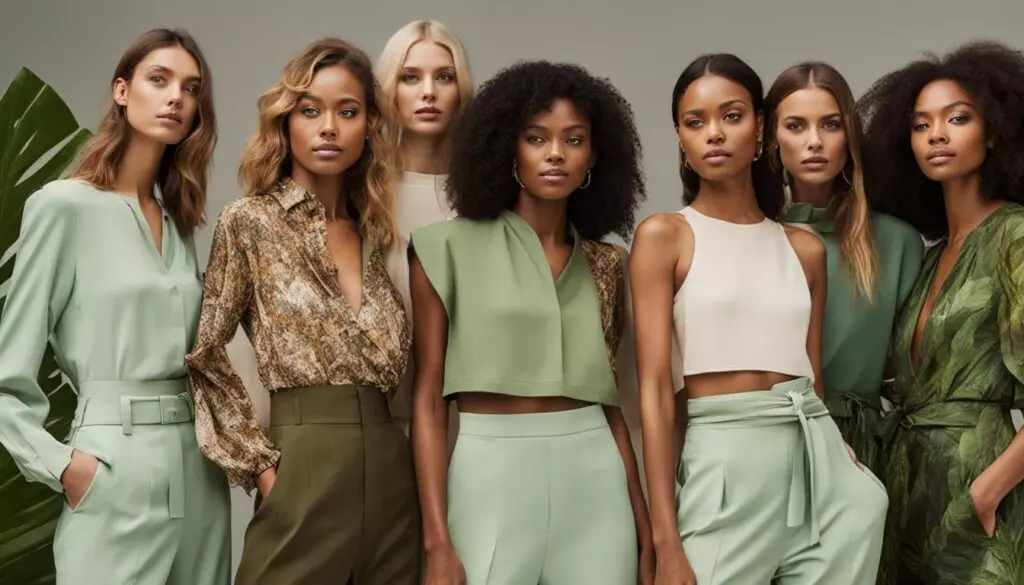Introduction
In 2024, the world of fashion is undergoing a remarkable transformation. As consumers become more aware of the environmental and social impact of their clothing choices, sustainable fashion is taking center stage. The demand for transparency, eco-conscious options, and ethical practices is soaring. Let's explore the key trends that will shape the fashion landscape in 2024 and discover how you can embrace the eco-chic look.
Transparency and Supply Chain: Fashion Futures

The quest for sustainability in fashion has ignited a strong focus on transparency and ethical practices in the supply chain. Today's consumers want to know where their clothes come from, who made them, and under what conditions. Transparency is not just a trend; it's a necessity for the future of fashion.
Brands that prioritize transparency build trust with their customers. By disclosing information about their workers' wages, working conditions, sourcing, and production processes, brands empower consumers to make informed choices and support ethical fashion practices. Let's hold brands accountable and work towards a more sustainable and transparent future.
Greenwashing: Unveiling the Truth
In the fashion industry, sustainability has become a buzzword. However, there is a growing concern about greenwashing - the deceptive practice of falsely claiming to be sustainable. Greenwashing undermines the efforts of genuinely sustainable brands and confuses consumers who want to make ethical choices.
To combat greenwashing, it's essential to support brands that transparently disclose their supply chain, sourcing practices, and manufacturing processes. By doing thorough research, reading labels, and looking for certifications from reputable organizations, we can make informed choices and contribute to a more sustainable future for the fashion industry.
A Change of Material: Innovations in Sustainable Textiles

In 2024, the fashion industry is embracing a change of material. Innovative textile solutions are emerging, prioritizing sustainability and reducing the environmental impact of clothing production.
One notable development is the introduction of lower-impact circular synthetic fills. These fills provide an alternative to traditional synthetic materials derived from non-renewable resources and contribute to pollution. By embracing these changes, fashion brands can reduce their carbon footprint while still delivering quality and stylish products.
Moreover, there is a shift towards certified ethical down and feathers, addressing concerns about animal welfare in outerwear production. Brands can offer consumers a more sustainable and compassionate choice by using responsibly sourced materials.
By exploring animal wool alternatives and plant-based fiber insulations, the fashion industry reduces its reliance on animal farming for wool production and contributes to a more sustainable and cruelty-free future.
Rental Options Are Widening: The Rise of Sustainable Fashion
As sustainability gains momentum, consumers are turning to rental options to embrace eco-friendly fashion without compromising style or budget. The demand for rental fashion has surged in recent years, driven by the growing awareness of the environmental impact of fast fashion.
Renting instead of buying reduces our carbon footprint by minimizing clothing production and disposal. It allows fashion enthusiasts to experiment with different styles and trends without contributing to textile waste. Rental platforms offer various options for different occasions and personal preferences.
By curating our wardrobes sustainably through rental options, we can choose from a diverse selection of high-quality, designer pieces while aligning with our values. Let's participate in the rental fashion movement and reduce our fashion footprint while looking fabulous.
Sustainability in Fashion: Embracing Upcycling as a Solution
The fashion industry is embracing upcycling as a creative and eco-friendly way to transform waste materials into new products. Brands like Doodlage, Rassleela, and Patch over Patch are leading the way in upcycled fashion, proving that sustainable can be stylish.
By choosing upcycled fashion, we support a more sustainable industry and make a personal statement through unique and environmentally conscious style choices. Upcycling not only reduces waste but also has a positive economic impact by utilizing existing materials and lowering production costs.
Let's embrace upcycling as a viable alternative to fast fashion, contributing to reducing waste and promoting a more conscious and eco-friendly approach to fashion consumption.
Achieving Climate Targets: The Role of Active Intelligence
Active intelligence plays a crucial role in achieving climate targets within the fashion industry. Brands are utilizing innovative materials, such as recycled polyester and organic cotton, to minimize their environmental footprint.
Companies are also investing in research and development to create new fabric technologies with a lower carbon footprint. They are implementing take-back programs to encourage customers to return old or worn-out clothing for recycling or upcycling, extending the lifespan of their products.
By embracing sustainable practices and eco-friendly materials, brands can significantly reduce carbon emissions and preserve the planet for future generations.
Conclusion
In 2024, sustainable fashion is not just a trend but a way of life. By embracing transparency, rental options, upcycling, and active intelligence, we can make a positive impact on the environment while still looking stylish and chic.
Let's support brands that prioritize transparency, accuracy, and sustainability. Together, we can shape a fashion industry that meets our ethical standards and embraces a greener and more stylish future.


















